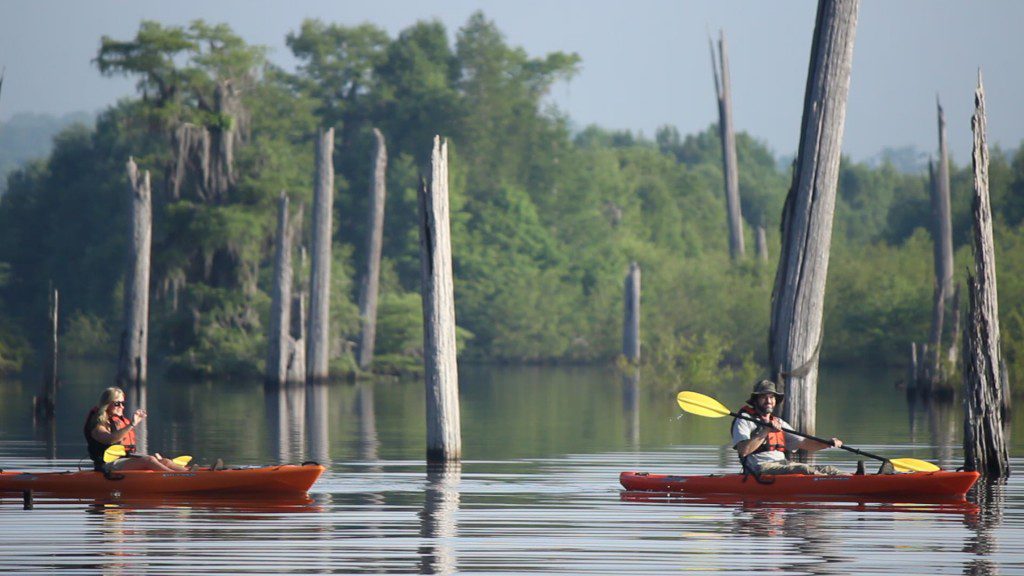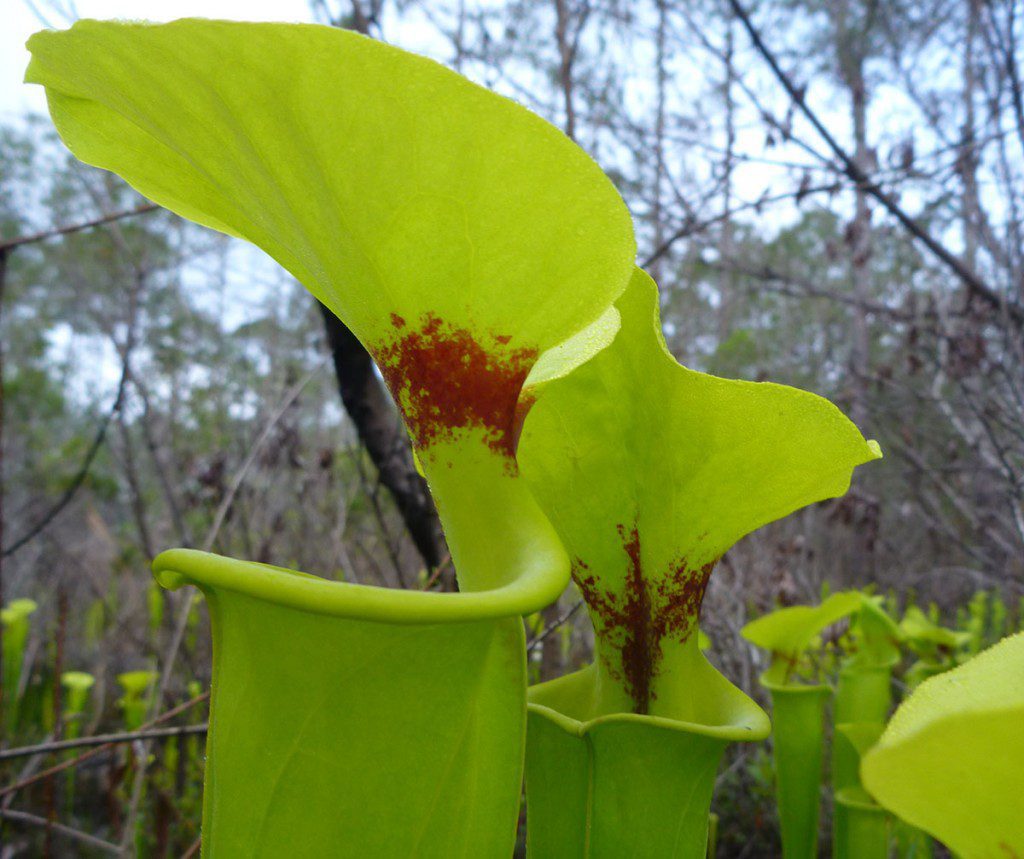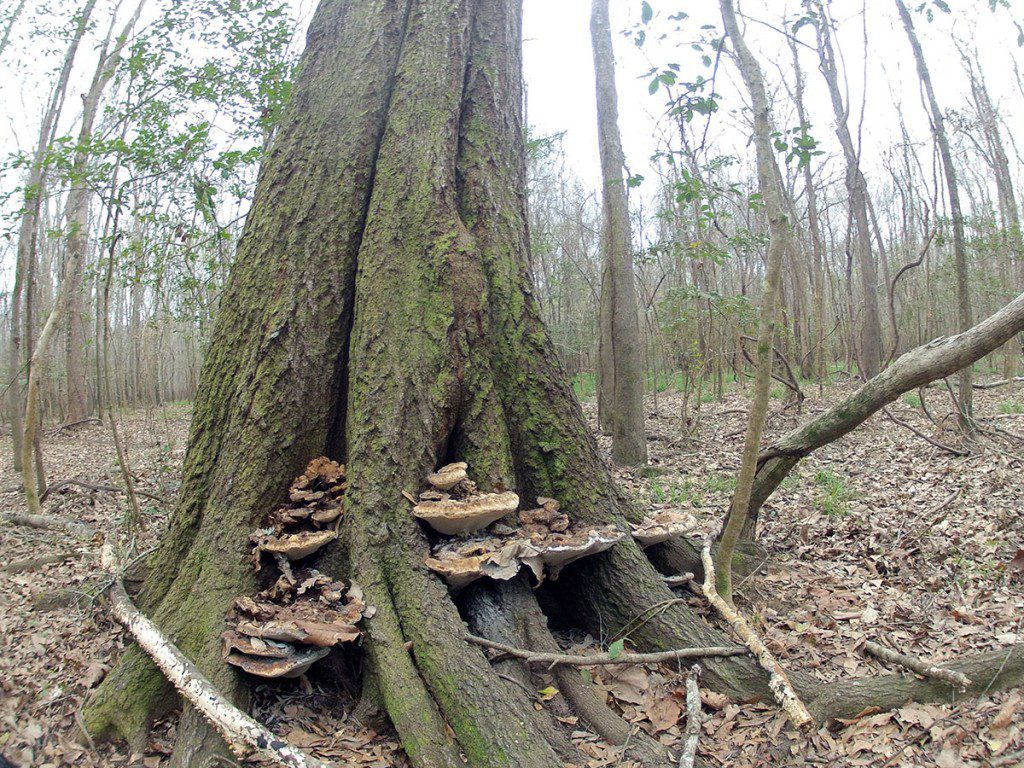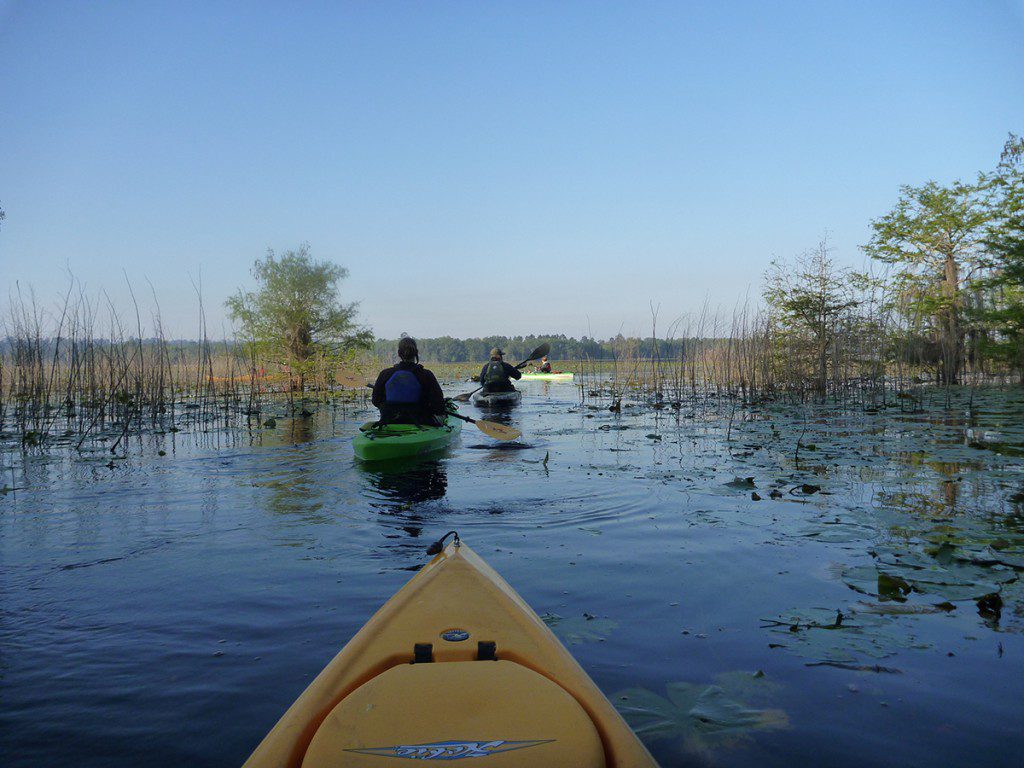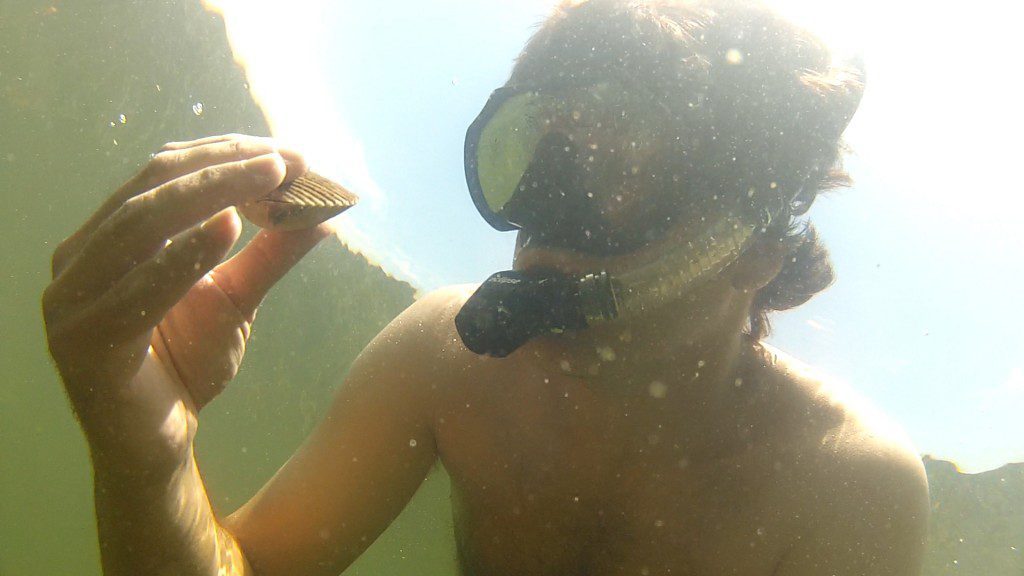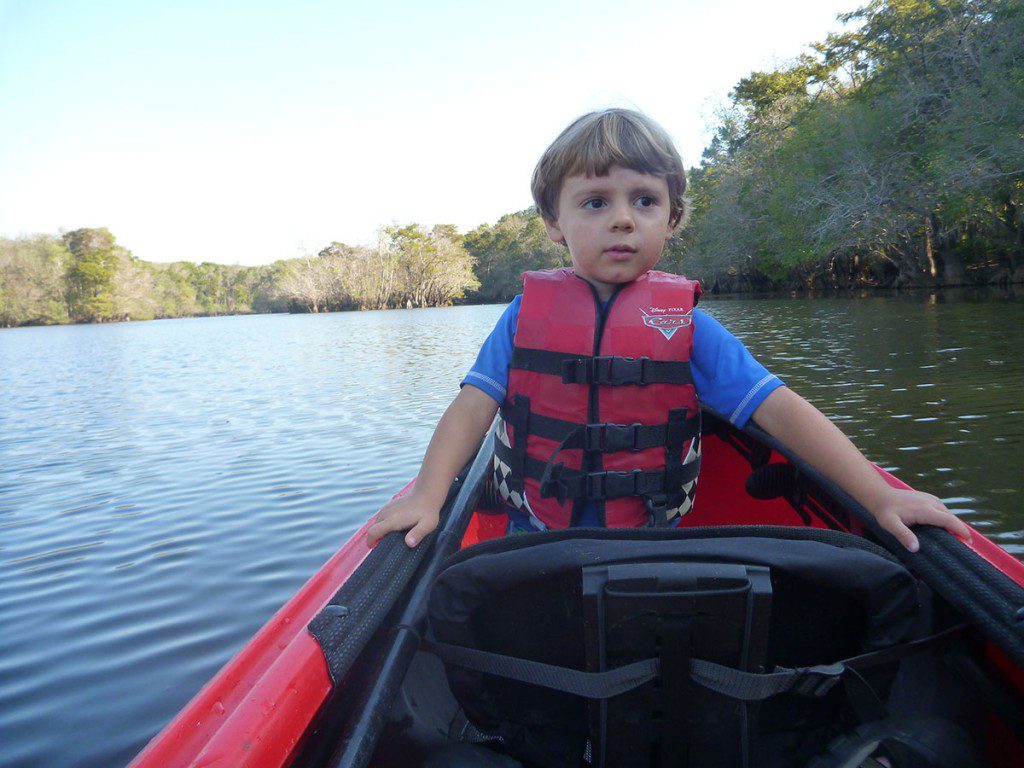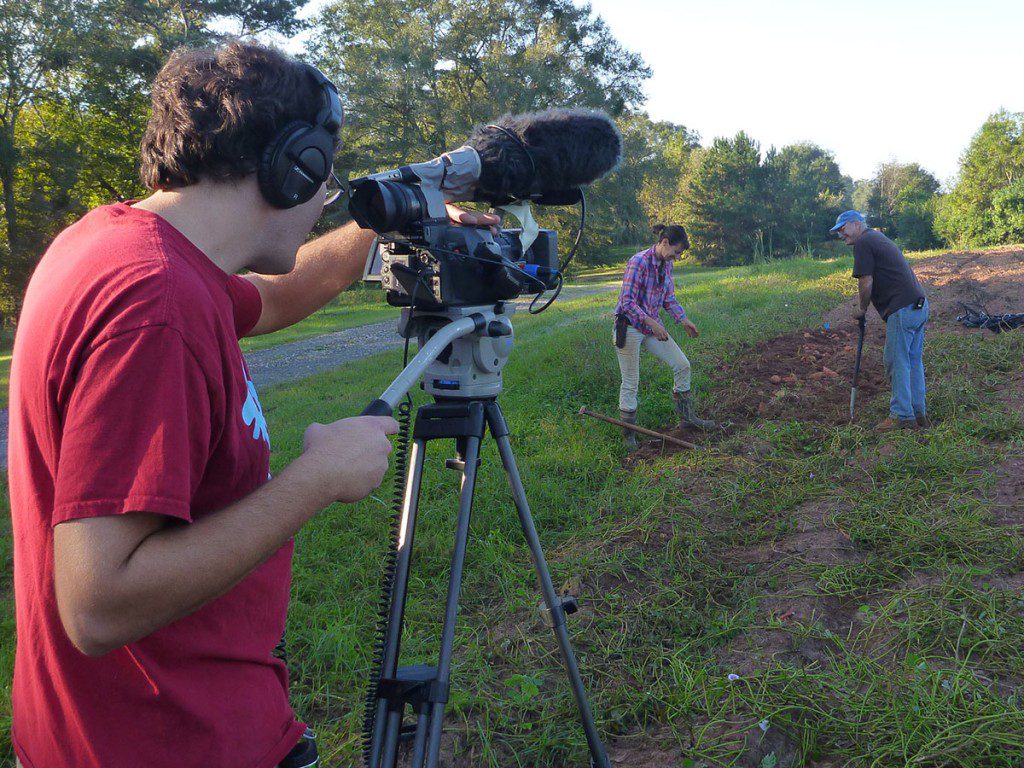WFSU’s EcoShakespeare segments have wrapped production and are in the process of being edited. Three segments explore Shakespeare’s connection to nature, shot in collaboration with the Southern Shakespeare Festival as well as Tall Timbers Research Station and Land Conservancy, the Friends of Wakulla Springs State Park, and Palmetto Expeditions. EcoShakespeare is funded by WNET in conjunction with their PBS series, Shakespeare Uncovered (Season 2 premieres on WFSU-TV on Friday, January 30). In this web exclusive video, Dr. Bruce Boehrer gives us an answer to one of the most asked questions about William Shakespeare, and does so in a way that gets us thinking about the ecological marvels in the WFSU viewing area.
Rob Diaz de Villegas WFSU-TV
It’s one of two questions everyone asks a Shakespeare scholar, and it has an environmental/ ecological answer. “If you go into a bar and start talking to strangers and tell them that you’re a Shakespeare scholar,” says Dr. Bruce Boehrer “…you’ll get asked one of two questions, depending upon the kind of bar you’re in.” Dr. Boehrer is the Bertram H. Davis Professor of English at Florida State University. “Either, did Shakespeare write those plays, or, was Shakespeare gay?”
Dr. Boehrer answers the first question in the video above, using an argument put forth by fellow Shakespeare scholar and “ecocritic” Jonathan Bate. Simply put, they argue, too many references in his works could only have been written by someone who grew up in Stratford-upon-Avon in the English county of Warwickshire. In the Taming of the Shrew, Christopher Sly makes mention of a couple of small hamlets in Warwickshire. In As You Like It, characters find their way to the Forest of Arden. The play is set in France but Arden is a forest of Warwickshire which derives its name from his mother’s family (her maiden name is Arden, a family that dated its lineage to before the Norman Conquest). The list goes on.
As Dr. Boehrer was describing Stratford and its surroundings, I couldn’t help but notice the similarities between it and Tallahassee. Stratford is a market town, a larger town in a region full of farmlands and forests. As Dr. Boehrer talked, I became especially interested in this idea of a natural landscape shaping an individual, potentially molding that person’s greatness. Warwickshire forged William Shakespeare, imprinting itself upon him in a way that showed through in his classic works. This interests me because much of my job is sharing the experience of visiting our own distinctive natural features.
I didn’t grow up here, but I’ve lived here for twenty years. Until we started this blog four years ago, however, I didn’t know much about the distinctive land and water resources that define natural north Florida. I wasn’t used to thinking of my home that way. Growing up in suburban Miami, my landmarks were streets, schools, and malls. The waterways I encountered on a daily basis (I saw the Atlantic Ocean often enough, but not daily) were canals built to alleviate flooding. In the 80s and 90s, Chrome Avenue was the edge of our world, the boundary between suburbia and wild Florida. It was a great childhood, and I had plenty of outdoor time riding my bike to our neighborhood park or to play in friends’ backyards. I definitely wasn’t thinking about rivers, swamps, or estuarine ecosystems.
That changed in 2010. As we started doing segments and traveling the area, I became aware of not just our many waterways and trails, but of a handful of iconic wonders that make north Florida ecologically remarkable. In 2014, I was able to cross a few of these off of my segment bucket list:
No place looks quite like the Dead Lakes, where you can paddle through the remnants of a drowned forest in the tupelo honey capital of the world.
For a brief time in late spring, a stretch of State Road 65 running between Sumatra and Hosford in the Apalachicola National Forest explodes with carnivorous plants, displaying a diversity not seen in many places.
After having explored the Apalachicola River and followed oyster research in Apalachicola Bay, we hiked through the Apalachicola’s floodplain forest. This is the backstage of the watershed, where oyster food is made.
This was the year that I learned that Tallahassee is located in the Red Hills region of Florida and Georgia. Thick red clay protects the underlying aquifer, which is fed by sinkholes in each of our larger natural lakes (Lake Talquin is the largest, but is formed by a dam).
And, years after we started going to Saint Joseph Bay to follow marsh and seagrass research, I finally got to go scalloping there.
This year I also started bring my three-year-old son along on some off camera EcoAdventures. I visit a lot of places that I want to share with my wife and young children, and Max finally seemed old enough for some extended action. We kayaked the Wakulla River, just a week after he swam at Wakulla Springs State Park. I know he doesn’t fully understand, but when we play at Cascades Park, I tell him that that water heads to the spring and into the river. And a couple of years after RiverTrek became the coolest thing that Daddy ever did, I took him camping and kayaking for a sliver of this year’s trip. The Apalachicola River is foremost among water bodies in his mind, and it was an incredible parental pleasure to see him dip a paddle into it.
It’s also the third year we’ve taken Max to New Leaf Market’s Farm Tours. Like Stratford, Tallahassee is surrounded by small farms, many of which belong to the Red Hills Small Farm Alliance. We visited a few Red Hills farms for a couple of segments, looking at their different sustainable methods (hydroponics, mulch building, free range animals). Later in his life, Shakespeare invested in agricultural lands around Stratford. Something tells me he would not have felt out of place in north Florida.
Just as this area has done for so many of us, William Shakespeare’s life in Warwickshire became a part of him and of his legacy. It’s the last thing I ever thought would be a focus of the WFSU Ecology Project, but here I am editing three segments on Shakespeare’s nature connection, set to air starting in late January. This, in a year when we capped off our research driven In the Grass, On the Reef initiative with the Oyster Doctors documentary. There are so many ways to appreciate what we have in this area. Science, the Bard, kids in kayaks, and tupelo honey. How do I top 2014?
What segments would you like to see in 2015? Where should we be going, and what should we be doing?
Shakespeare Uncovered is made possible by the National Endowment for the Humanities. Major funding is also provided by The Joseph & Robert Cornell Memorial Foundation, Dana and Virginia Randt, the LuEsther T. Mertz Charitable Trust, the Lillian Goldman Programming Endowment, The Polonsky Foundation, Rosalind P. Walter, Jody and John Arnhold, the Corinthian International Foundation, and PBS.

